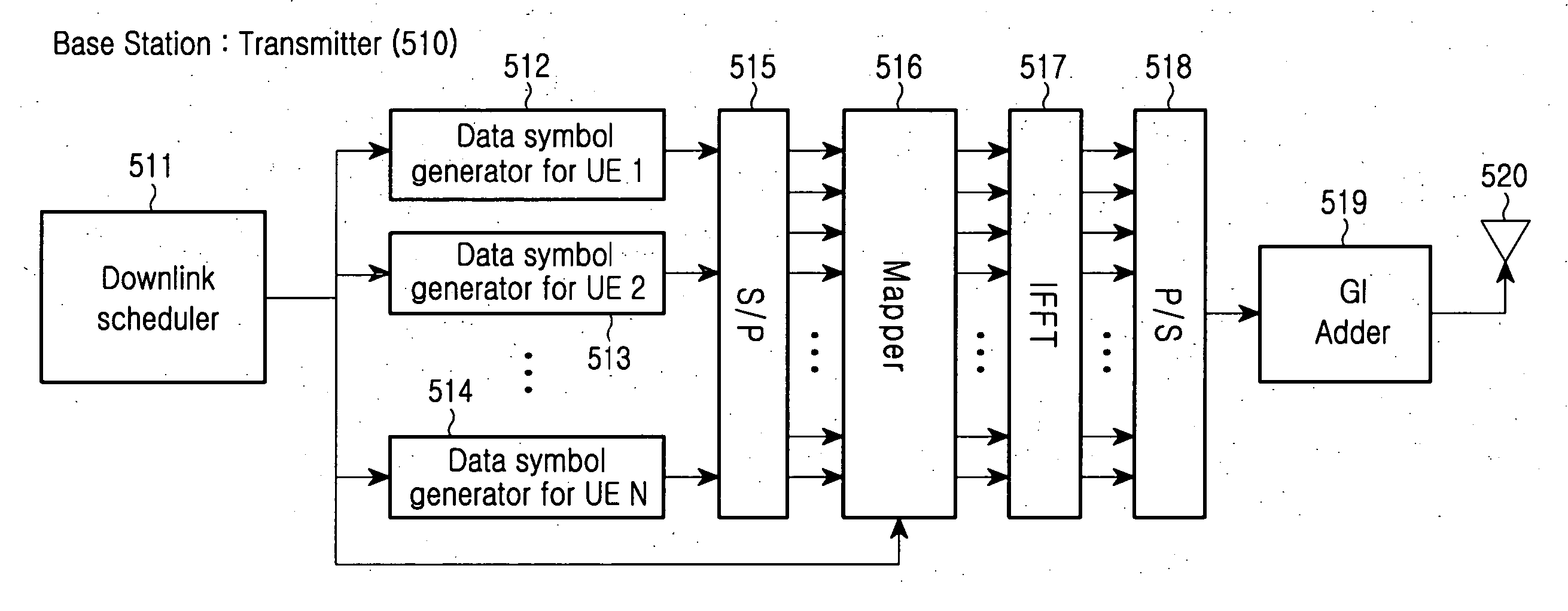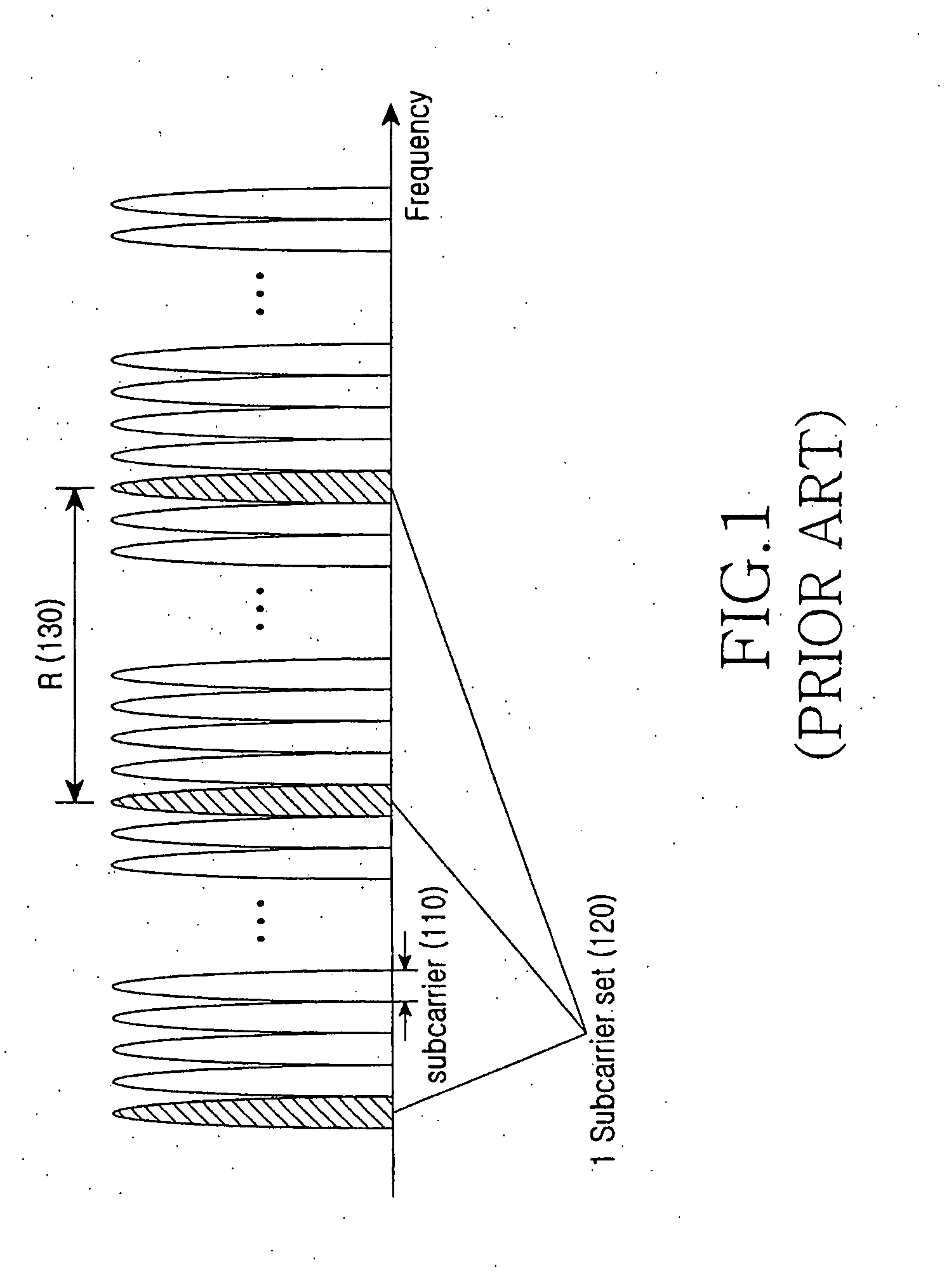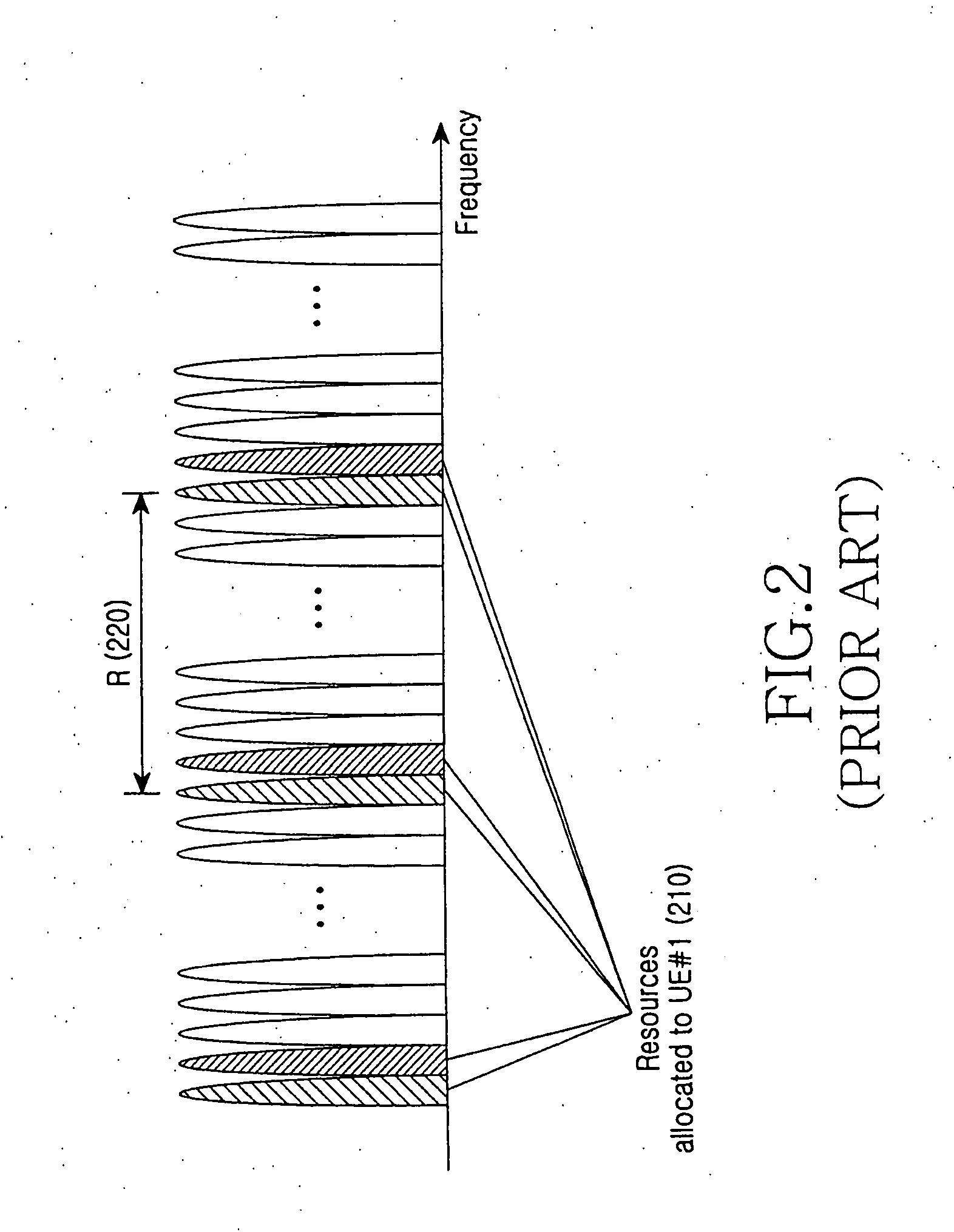Method and apparatus for allocating transmission resources and signaling the allocated transmission resources for frequency diversity
- Summary
- Abstract
- Description
- Claims
- Application Information
AI Technical Summary
Benefits of technology
Problems solved by technology
Method used
Image
Examples
embodiment 1
[0035] An embodiment of the present invention presents a mapping rule for the maximum number of available subcarrier sets R=a power of 2.
[0036] Let the offset of a subcarrier set in the frequency domain be denoted by a variable x being an integer ranging between 0 and R−1, and the index of a subband corresponding to the subcarrier set be denoted by a variable y of the same range. Then x can be expressed as the sum of powers of 2 in the following Equation (1): x=∑q=0Q-jcx,q·2q,cx∈{0,1}(1)
where the coefficients of powers of 2 in x, cx are either 0 or 1 and Q is derived from R in the following Equation (2):
Q=log2(R) (2)
y corresponding to x is calculated using the coefficients of equation (1) by the following Equation (3): yx=∑q=0Q-1cx,Q-(q+1)·2q(3)
[0037] As noted from the above equations, a subband index y corresponding to the offset x of a subcarrier set is the Bit-Reverse Order (BRO) representation of the binary value of the offset z.
[0038] For R=16 and Q=4, subband indexe...
embodiment 2
[0049] Another embodiment of the present invention presents a mapping rule between the offsets of subcarrier sets and subband indexes when the maximum number of available subcarrier R is not a power of 2. Given R=the product of a power of 2 and an odd number, Equation (6) is shown:
R=M·2Q, M is odd number (6)
the offset of a subcarrier set, x is expressed as Equation (7): x=rx+∑q=0Q-1cx,q·2q,cx∈{0,1}(7)
where variables Q and rx are defined as shown in Equation (8):
Q=log2(R / M)
rx=x% M (8)
[0050] In Equation (8), rx is defined as the remainder of dividing x by M and thus it is an integer between 0 and M−1. A subband index y corresponding to x is calculated by Equation (9): yx=rx·2Q+∑q=0Q-1cx,Q-(q+1)·2q(9)
[0051] A coefficients cx used in Equations (7) and (8) is 0 or 1.
[0052] For R=24, subband indexes corresponding to the offsets of subcarrier sets are defined according to Equations (6) to (9) as follows.
[0053] According to Equation (6), M=3 and Q=3 for R=24. If x=13, y is 9 ...
embodiment 3
[0062] A third embodiment of the present invention pertains to 1D signaling of resource allocation information. 1D signaling refers to transmission of resource allocation information for UEs within one cell. Therefore, the 1D signaling is viable for a MAP-type signaling channel structure in which each UE can demodulate resource allocation information of other UEs as well as its resource allocation information. That is, if each UE can acquire resource allocation information of other UEs and resources are allocated in an order of successive subband indexes, the UE finds out actual frequency resources allocated to it, referring to the resource allocation information of all UEs.
[0063] In the 1D signaling method, resource allocation information for each UE includes the first or last subband index of allocated resources. For instance, if a system with R=16 allocates four minimum resource units to each of four UEs, A, B, C and D, resource allocation information for each UE includes the fi...
PUM
 Login to View More
Login to View More Abstract
Description
Claims
Application Information
 Login to View More
Login to View More - Generate Ideas
- Intellectual Property
- Life Sciences
- Materials
- Tech Scout
- Unparalleled Data Quality
- Higher Quality Content
- 60% Fewer Hallucinations
Browse by: Latest US Patents, China's latest patents, Technical Efficacy Thesaurus, Application Domain, Technology Topic, Popular Technical Reports.
© 2025 PatSnap. All rights reserved.Legal|Privacy policy|Modern Slavery Act Transparency Statement|Sitemap|About US| Contact US: help@patsnap.com



